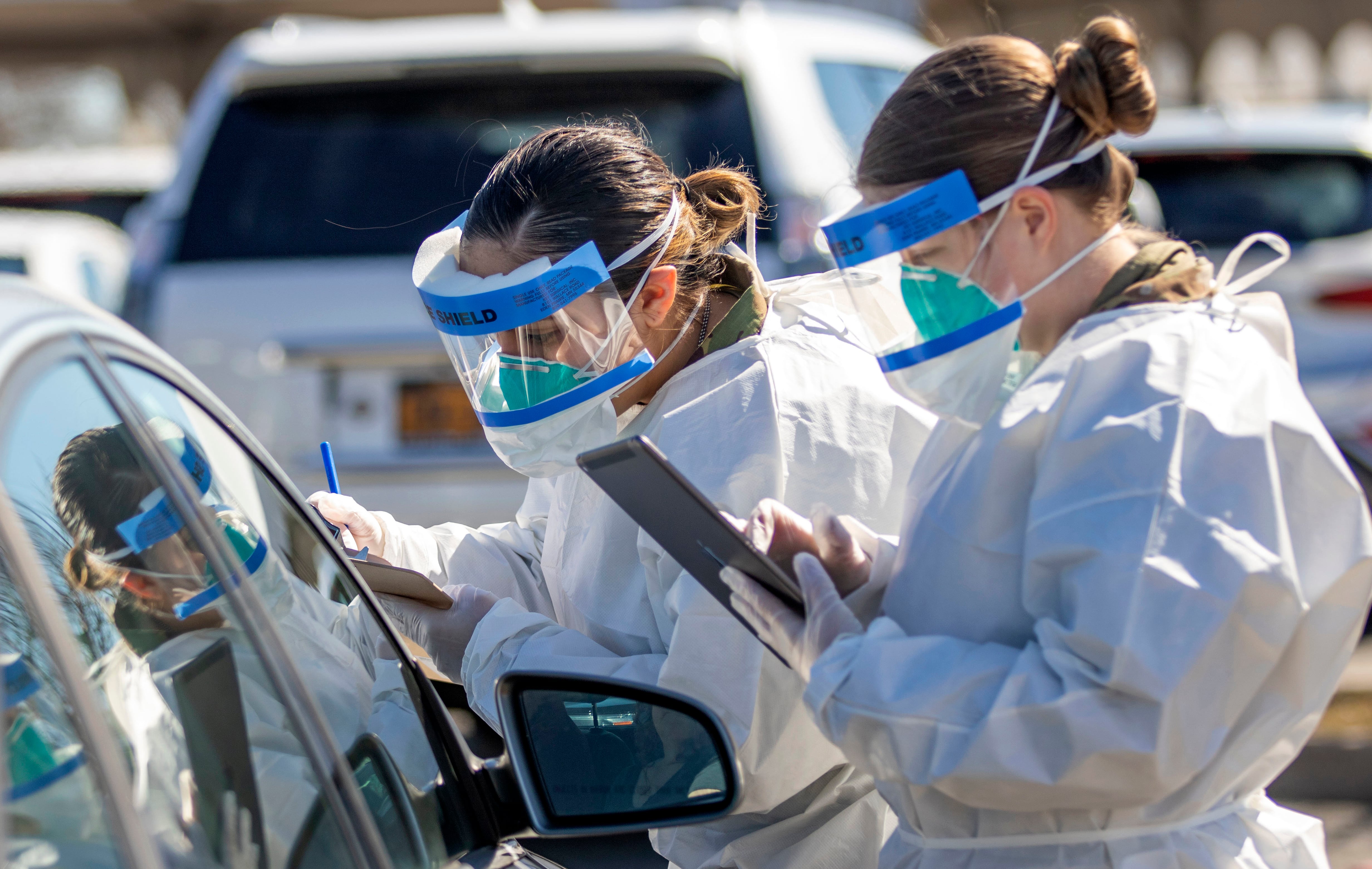In the days following the first confirmed case of a service member with coronavirus, the Pentagon began breaking up meetings into teleconferences and putting distance between chairs in gathering spaces, while the defense secretary issued guidance force-wide allowing commanders to make decisions about public events, working from home and other measures to stop the viruses spread.
Four weeks on, service members have been sounding the alarm about the lack of precautions taken in their organizations, from packed military entrance processing stations to all-hands meetings and town halls. Defense Secretary Mark Esper told reporters Monday that commanders continue to have the authority to take, or not take, Centers for Disease Control and Prevention recommendations as they apply to their units.
“There will be inconsistencies because every situation is unique. It’s unique by the type of unit, it’s unique by the mission, it’s unique by the location – and any other number of factors,” Esper said. "...but again, I have to trust our commanders and our senior [noncommissioned officers] are taking all the right precautions].
But there hasn’t been any further accountability for commanders, Esper told Military Times, as he has not seen any situations that he believes need a second look.
“We can all step into that same location and make a different call on each,” Esper said. “That’s why I have to trust the commanders. If there’s something that sounds really egregious or whatnot, yeah, we should follow up on that, using the chain of command.”
Among those submitted by Military Times readers include classes being taught in an 80-person auditorium, 20-person meetings among staff of a unit deployed to Kuwait and dozens of recruits coming off the street crammed into MEPS for health work-ups before they ship off to basic training.
“The obvious problem is, this pandemic is driven by people who are asymptomatic,” a MEPS staffer told Military Times on Friday.
RELATED

Though personnel who feel sick have been urged to stay home, and entry stations are screening for fevers and symptoms, there are concerns the transmission risk is still high.
“... I can’t put out a blanket policy, if you will, that we would then apply to everybody, because every situation’s different,” Esper said. “Tell me how I would implement 6-feet distancing in an attack submarine? Or how do I do that in a bomber with two pilots sitting side-by-side?”
To date, 133 service members have tested positive for COVID-19, per data released daily by Esper office. there are 44 civilians, 35 dependents and 31 contractors also battling the virus, with 15 hospitalizations across the Defense Department and five recoveries so far.
The first death occurred Saturday, of a contractor who worked at a Crystal City, Virginia, office, near the Pentagon.
As projections peg the pandemic lasting up to more than a year, Esper said the force would feel the effects long-term.
“I’m confident that while it may have some impact on readiness, it will not affect our ability to conduct our national security missions both at home and abroad,” he said.
Esper said he himself has not experienced any symptoms, though the Air Force confirmed Friday that one airman who recently visited the Pentagon and a contractor assigned to the building have tested positive.
“I’ve been screened for temperature numerous times,” he said. “I have not taken a test.”
Meghann Myers is the Pentagon bureau chief at Military Times. She covers operations, policy, personnel, leadership and other issues affecting service members.




